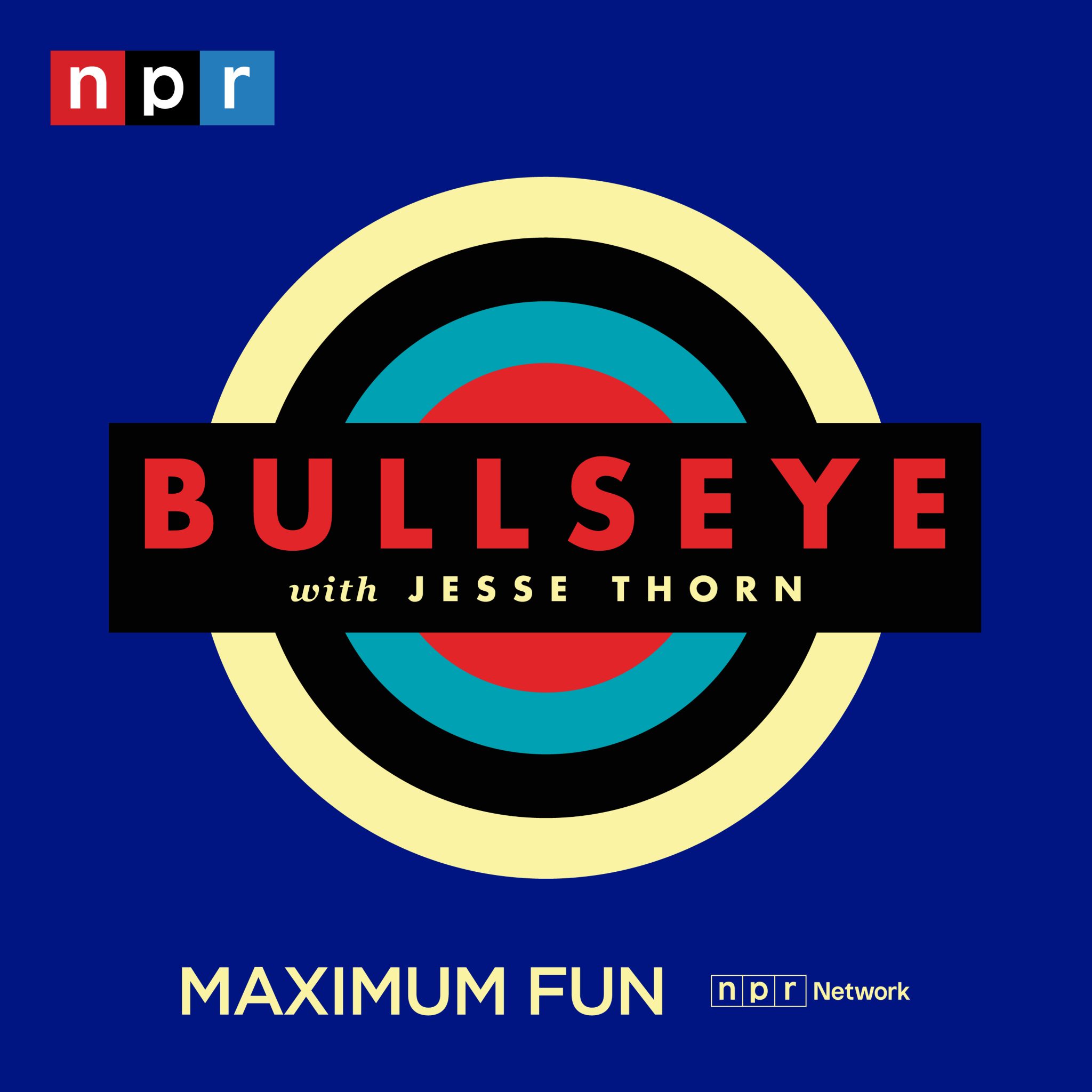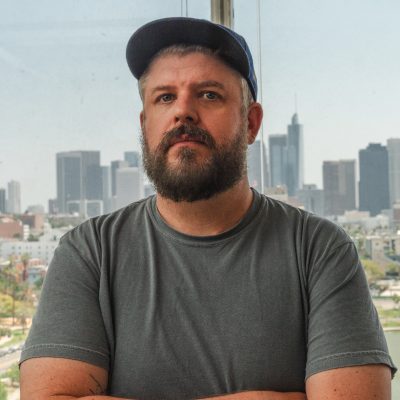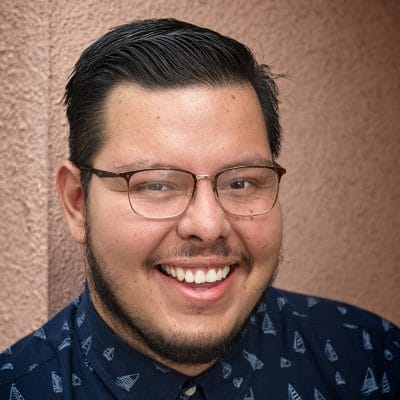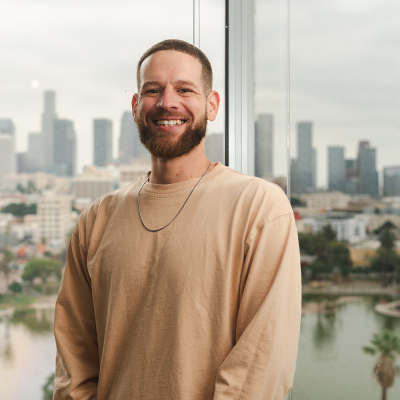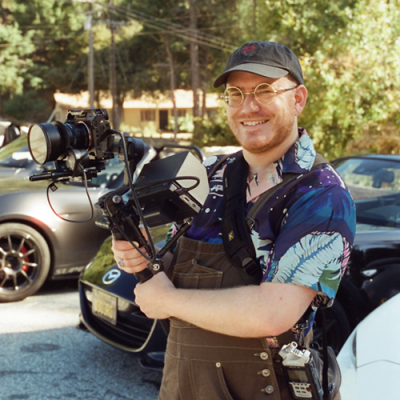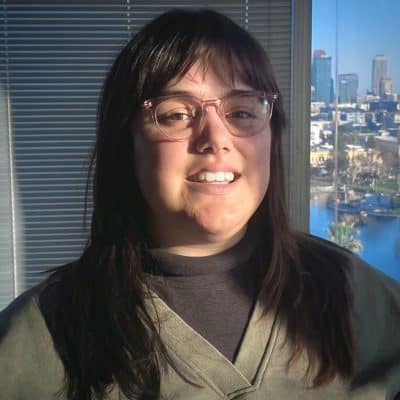Transcript
[00:00:00]
Transition: Gentle, trilling music with a steady drumbeat plays under the dialogue.
Promo: Bullseye with Jesse Thorn is a production of MaximumFun.org and is distributed by NPR.
Music: “Huddle Formation” from the album Thunder, Lightning, Strike by The Go! Team—a fast, upbeat, peppy song. Music plays as Jesse speaks, then fades out.
Jesse Thorn: It’s Bullseye. I’m Jesse Thorn. There’s this famous documentary called Los Angeles Plays Itself. I don’t know if you’ve seen it. It’s actually kind of a video essay. About 20 years old, runtime of just under three hours—really long. Kind of a masterpiece. The filmmaker Tom Anderson chronicles the history of how Los Angeles has been depicted in movies—not the kinds of movies that are shot in Los Angeles but where Los Angeles is pretending to be Chicago, but movies that are set in LA. Everything from glamorous stories about Hollywood stars to gritty dramas about gangs, action movies with car chases where a car goes off a hill in one place in Los Angeles and then lands 30 miles away.
Anyway! In Los Angeles Plays Itself, Anderson basically argues that there are very few movies that show Los Angeles as it actually is. But there’s one exception: Killer of Sheep from 1978, directed by my guest, Charles Burnett. And speaking of masterpieces, Killer of Sheep is certainly one. It’s set in Watts. It follows a handful of people who live there—including Stan, who is basically a regular guy who works at a local slaughterhouse. It’s shot in black and white. It reminds you a little bit of Italian classics like The Bicycle Thieves. It is a breathtakingly beautiful work. Charles Burnett wrote and directed the movie as part of his master’s thesis at UCLA film school. It was certainly never a blockbuster. For many years, it was hard to even find a way to watch it. But its influence has lasted decades.
It’s now in the Criterion Collection and in the Library of Congress. It’s seen broadly as a landmark in the history of Black American cinema as well as independent cinema in this country. In the almost 50 years since, Burnett has made a number of other wonderful films: To Sleep With Anger starring Danny Glover, the Crime Drama of The Glass Shield, and in 1999 a movie called The Annihilation of Fish. It’s a film that was essentially unreleased. It played some festivals, got one negative review, and was basically. Withdrawn. Then, despite the fact that it had some really passionate fans, it got caught up in bureaucratic red tape about ownership and estates and all kinds of complicated things. And it ended up taking 25 years to make it to general release.
The Annihilation of Fish stars James Earl Jones and Lynn Redgrave as Fish and Poinsettia. It’s a romance. The two of them are seniors. Fish, who’s a Jamaican immigrant, believes that he is being followed around by a demon—like a literal demon, a demon he has to physically wrestle in order to control. Poinsettia believes she is in love with a literal ghost.
Let’s hear a clip from the movie—which, again, is a charming, funny, beautiful, touching romance. In this scene, Fish is telling his landlord, who’s played by Margot Kidder, about the first time he encountered the demon.
Transition: A whooshing sound.
Clip:
Fish (The Annihilation of Fish): And the police came and took me to a home and locked me up. And they gave me pills and group therapy in tapioca pudding for three times a week for ten years. But that demon kept coming back.
Mrs. Muldroone: Tell me, Mr. Fish—how did you know that the person you saw looking up her dress was a demon?
Fish: Because an angel wouldn’t do such a nasty thing.
Transition: A whooshing sound.
Jesse Thorn: Charles Burnett, I’m so happy to have you on Bullseye. Welcome to the show.
Charles Burnett: Thank you.
Jesse Thorn: Had you watched The Annihilation of Fish in the 25 years between when it was playing film festivals and when it was—?
Charles Burnett: I watched it for the first time, actually, at Vidiots. Which was shown—I think it was for some—I’m not quite sure. You know, I was busy with helping with the coloration of timing, and so we were looking at some things then. That was probably the other time I’ve seen it since, like 20 years ago. Whatever it was.
Jesse Thorn: What did you think about it?
Charles Burnett: Well, it’s hard for me to judge, because I was looking at different things—you know, what technically needed to be done.
[00:05:00]
And so, it’s kinda hard to sort of look at something at the time you made it, you know, and see if it still sews up and things like that. So, I was more worried about that, you know.
Jesse Thorn: You were like, “Is that yellow the right yellow?”
Charles Burnett: Well, I was worried about is it going to work with an audience now. You know, because this was done, like I said, 20 years ago or so. And so, it probably had more relevance then than it did now. So, I don’t know.
Jesse Thorn: Was the fact that it had never gotten distribution, something that made it more of a sad memory?
Charles Burnett: Well, it was a more of a sad memory not because of that, but because of James Earl Jones and Margot Kidder and Linden Chiles. They passed on, you know, and it was—and looking at the film, that bothered me. You know, it sort of—I wish they were here. I wish they could have appreciated the response the press gave it, you know. And so, that’s what I was concerned about looking at.
Jesse Thorn: Watching the movie, I was reminded of just the presence of James Earl Jones. Like, there’s three legendary movie stars in this movie. And James Earl Jones is so radiant, he just blows everything else off the screen. (Chuckles.)
Charles Burnett: He is such a good person too.
Jesse Thorn: Yeah?
Charles Burnett: He was. It was really wonderful to work with him and Lynn Redgrave—the whole cast was great. Y’know? So, I was very pleased all the way. In fact, I wish that it had kept on going, we had more scenes to shoot, you know. It was just that fun working with them.
Jesse Thorn: There’s a few moments where he breaks out into laughter, and you just think, “Well, that’s why you wanna look at a movie star.”
(They chuckle.)
To have a moment like that.
Charles Burnett: Oh yeah. He was fun. He’s a good person.
Jesse Thorn: It’s an almost-but-not-quite fantastical film. And there’s this like—you know, James Earl Jones’s character is presumably schizophrenic, but there is like a little grace note, which is that when he wrestles the devil and throws him out the window, the leaves shake.
Was it important for you to acknowledge his reality that way?
Charles Burnett: In a way, yes. Because you know, what is real to him and what is real to someone else is completely— You know, it depends on how you see it and who’s seeing it, you know? And for him it was real. You know? Just like for Poinsettia, who was (inaudible)—she believed very strongly that she had an affair with Puccini, you know. And if you have that mindset, you know, I guess it’s real to you. You know? So, we wanted to make it somehow ambiguous. You know, maybe there’s something—maybe some truth to his illusions and things.
Jesse Thorn: Something that I noticed in James Earl Jones’s character that reminded me of some of your other movies was the thing that motivates him to fight this demon is that it is his job. It is his work to do in the world. That work is eventually—spoiler alert—replaced by love. But it’s his job. And I feel like you have— You know, Killer of Sheep in some ways is about showing up to work.
Charles Burnett: Mm-hm. But for him, it’s his purpose. You know, he’s doing something constructive and positive, and he’s just not standing around. He’s actually has—he has a mission in life just to fight to demon, this evil person in the world. You know? So, his ideas and why he’s there comes from a much higher and more empathetic place, you know. So, he has a lot of good qualities about it.
Jesse Thorn: I mean, even if your job is a miserable one, the purpose that you’re pursuing when you show up to that job is take care of your family, take care of yourself, have a place in the world. You know what I mean?
Charles Burnett: Yeah. I mean, he could be either one of these people that you see on the street out in front here. You know, we had these ideas and these notions, you know. And we believe that they have a purpose. And still, because of circumstances, they’re trapped in this environment, you know. And I guess, because of the way things are, they couldn’t find their purpose or whatever. So.
Jesse Thorn: We’ll finish up with Charles Burnett after the break. Stay with us. It’s Bullseye from MaximumFun.org and NPR.
Transition: Thumpy synth with light vocalizations.
Jesse Thorn: Welcome back to Bullseye. I’m Jesse Thorn. My guest is Charles Burnett. He’s a writer and director.
[00:10:00]
In 1978, he directed the film Killer of Sheep, which is broadly considered to be one of the most important films in the history of Black American cinema and independent cinema. His 1999 movie, The Annihilation of Fish, is also brilliant and was just restored by the UCLA film and television archive. Let’s get back into my conversation with Charles Burnett.
What movies do you remember going to see as a kid?
Charles Burnett: My mother liked movies a lot, and so we were aware of a lot of the older movie stars, you know, because she was a great fan of older movie stars. But you know, like The Postman Always Rings Twice and things like that. And Shane was a big one, High Noon, all those things like that. And then later, on when I was in college and like the new wave and things like that in French films, and third world cinema and films were very important. Because I was trying to find what film should I sort of follow and sort of learn from.
And it was those earlier films— Hollywood in the early days was making some really good films. And they made some bad ones too, you know. (Chuckles.) I mean, could speak of Birth of a Nation and a bunch of other films. But they did have some films that—and they had some good TV shows on TV where—and like the Million Dollar Movie used to come on, and that used to have some good shows. And I remember one of the movies that really fascinated me was the one about the talking mule. I can’t think of his— Remember that one?
Jesse Thorn: Francis! Francis the Talking Mule!
Charles Burnett: Francis the Talking Mule! That’s what it was. Yeah. Yeah. And things like that were very great. But you know, I watched a lot of, you know, comedies like Laurel and Hardy and, um… Charlie Chaplin. A whole bunch of films like that were very important. And I like cowboys. (Laughs.) Yeah.
Jesse Thorn: Did you go see movies in the big movie theaters downtown?
Charles Burnett: Oh, yes. I did. And in fact, what happened was I used to work downtown at the library, the main branch library, and I was going to school. And so, I would do school, you know, and have all this time, free time. And I would to go down to the Los Angeles Theater. And you know, it was a palace, and it was great. It had these vaulted ceilings, so to speak. And you could come in the afternoon—’cause I worked in the evenings sometimes—and I would just sit in the theater and just rest. And they would play this really beautiful music, you know, this sort of like the music from Lawrence of Arabia and all these other things, Spellbound and all that sort of thing. And so, I’d just sit there and just relax and just… that was my world for a long time. Yeah.
Jesse Thorn: Was it still pay once and sit there all day, like feature film, cartoon, newsreel type thing?
Charles Burnett: Oh, yeah, yeah. Yeah, absolutely. And, I mean, I saw Lawrence of Arabia on the big screen back then. It was just beautiful, you know. And it was there, I think, that I really committed to wanting to be a photographer or a film—a camera person. But then I was working at the library, and so I had a chance to read all these photo magazines and photojournalists, and that really captured me. You know? I loved watching those—looking at those black and white stills of things that happened with—they would capture, in the streets of New York or wherever. And that was another thing that sort of pushed me toward making films and documentary films.
Jesse Thorn: When you were an undergrad at UCLA, were you living in South LA?
(Charles confirms.)
Jesse Thorn: What was it like to go back and forth between the campus world of ULA in the early mid-‘60s? Which must have been a lot.
Charles Burnett: It was a different world. I mean, I think what happened was—going to LACC was a really great experience, because it was a transition where it sort of prepared you for UCLA, which was basically just… One of the things about LACC, it was very diverse. You know, people from—the first time, because I came from like Freemont High in South Central, you know, and it was only Hispanic and Black and things, you know. That was it. And so, UCLA is surrounded by Brentwood, Bel Air, and all those places like that. Real well-to-do, you know? And so, that was a big change and difference. And I had more in common with the people at LACC than I did at UCLA. (Chuckles.) So.
Jesse Thorn: What was it like making the bus ride every day? You know what I mean?
Charles Burnett: Yeah, it was—well, it was a long ride. In fact, it was a combination of bus ride and streetcar. You know, LA had street cars and electric cars and things.
[00:15:00]
It was—I would say it was a very decent transportation, and it would take me about an hour and a half or something like that, maybe two hours, particularly if it’s rush hour. It was just endless, you know. And it took a while, and then back was another long journey. But it was, you know, common practice. And I did and didn’t realize that—it wasn’t that, you know, strenuous or anything.
Jesse Thorn: When you were in college, it was getting into the mid-60s. Did you have an eye on what was going on at UC Berkeley, and what was happening at San Francisco State, and what was happening for that matter on the campus at UCLA?
Charles Burnett: Oh, yeah. I mean, you had Jackson State, Ken State, and Berkeley. In fact, I was trying to think of the name of some of the students over at Berkeley that—they were like well known, you know, even everywhere. I can’t think—someone asked me about the name of this particular person, and I can’t think of his name at the moment. He was one of the—I guess you can say like—yeah, he had a name of being one of the leaders of the protest movers at Berkeley. It was up in San Francisco. It was really an exciting period. Because you know, here locally you had the civil rights movement. You had Martin Luther King, you had Malcolm X. A lot of things going on here.
And you know, when you go to UCLA, you see it. It’s an open door. Like, so much freedom. People could do whatever they want. At the time we were going to UCLA, it was only like $15 or $25 for a quarter. And so, it was the only place where we can make films cheaply, you know? And so, I just stayed there until they kicked us out, you know? Well, a lot of us did that, you know. They actually told us, “Hit the road, because you’re taking up all the space.” And enrollment was—
Jesse Thorn: And they had cameras and film and places to develop your film and…
Charles Burnett: And the student union. You know, food, everything was dirt cheap, you know? And you know, you can get all sorts of benefits from being in school, you know. And so, why leave? And you know—I mean, I knew that the only way I could make film and continue to make film was to have the access to all this equipment and sound stage and stuff like that. And so, there I was. And a bunch of us had the same attitude that we stay. And so, it was a—and plus you met a lot of nice people, a lot of great people that were there. Like other students who were—they had to work on your film, you had to work on their film. You had to work on their film, and that was a good experience. Yeah, those were the days.
Jesse Thorn: Did you find that writing and eventually filmmaking were exciting for you in part because you had a speech impediment and read slowly? And so—
Charles Burnett: Well, I didn’t join groups and things like that, because I was more or less a listener, you know. And because of my speech impediment, I sort of like stayed in the background and things. And I had other things. I used to be in a classroom looking out the window rather than looking at the blackboard, you know—daydreaming or something. But I was always interested in the kids I grew up with and trying to understand their lives and why we were so different. I mean, I had— I think that one difference of having the advantage of going to college at UCLA—and UCLA gave me a different outlook on life. That’s when I started changing my attitude about telling stories and about how to tell a story from their point of view without my imposing my narrow views on the world and on them.
And so, I wanted to make a film. I did Killer of Sheep about how they saw the world, how they themselves—not me imposing upon them. You know?
Transition: A whooshing sound.
Clip:
Speaker 1(Killer of Sheep): That’s the way nature is. I mean, the animal has his teeth, and the man has his fist. I mean, when a man’s got scars on this mug from dealing with some (censor beep) every day for his natural life—I mean, there’s smoke here. We taking our issue. You be a man if you can, Stan.
Speaker 2: Wait—you—wait, just one minute. You’re talking about be a maaan, stand up. Don’t you know there’s more to it than just with your fist?! The scars on your mug?
[00:20:00]
You’re talking about an animal and whatnot. Do you think you’re still in the bush some damn where? You here! You use your brain! That’s what you use!
Transition:
Charles Burnett: That really changed my old attitude and approach to filmmaking was having seen that—you know—I spoke a different language than the kids I grew up with, in a certain sense. If I wanted to represent anyone, I could only represent my views and that’s it. And so. You know, because one of the things we did—and we were under this illusion, this romantic notion that we spoke for the Black community and stuff like that. Which was totally ridiculous, you know? (Chuckles.) You know, you speak for yourself and they through themselves and whatever it is. So.
And so, we were—and at UCLA at the time—trying to discover how do you make a film that tells our narratives, that reflects our values and things without imposing or distorting reality?
Jesse Thorn: We’ve got more to get into with Charles Burnett. There’s a scene in Killer of Sheep that is absolutely iconic. It’s kids jumping from the roof of one apartment building onto another. It’s so iconic, in fact, that it became the cover of one of Mos Def’s albums. We’ll talk about that scene after the break. It’s Bullseye from MaximumFun.org and NPR.
Promo:
Music: Upbeat, exciting music.
Hal Lublin: WrestleMania is the biggest—
Danielle Radford: And busiest!
Hal: —time of the year for wrestling.
Danielle: And the Tights and Fights podcast is more important than ever.
Lindsey Kelk: We have so many questions to explore! How can you understand John Cena’s motivation as a bad guy? Why is a car crash actually a great expression of friendship?
Danielle: You mean fwendship, right?
Lindsey: Of course.
Danielle: Whether you’re a longtime wrestling fan or coming back after a break, Tights and Fights has you covered.
Hal: This WrestleMania and every weekend after, on Maximum Fun.
Music: Tights and Fights podcast! Tights and Fiiiiights!
(Music fades out.)
Transition: Bright, chiming synth with a syncopated beat.
Jesse Thorn: I’m Jesse Thorn. You’re listening to Bullseye. My guest is director Charles Burnett. He was a pioneer of Black American independent cinema, the director of Killer of Sheep, To Sleep With Anger, and more. His 1999 film, The Annihilation of Fish, was just restored and is in general release for the first time.
There’s a famous scene in Killer of Sheep—a famous shot, where the camera is in a dark alley between houses. It’s looking up at the space behind the houses into the sky. It’s daytime. And there are children jumping from roof to roof. And that isn’t something that I saw as a kid, but there was this thing that would happen where kids in the neighborhood that I grew up in would hide behind cars—parked cars—and then jump out in front of moving cars in the middle of the block.
Charles Burnett: Oh, geez! Yeah.
Jesse Thorn: And I remember the feeling of that at— Like, when I was in my early 20s, I lived in the Western Addition in San Francisco, and I drove a Dodge Dart, a ’65 Dodge Dart. Drum brakes.
And these little kids—you know, 8-year-old kids—would jump out into traffic on Webster Street. And I’d have to slam on the brakes to keep from hitting them. And they’d laugh and laugh and laugh.
(Charles chuckles on a “tsh” sound.)
And get back in, right? And that shot reminded me of those kids, because it is both an everyday thing and a defiance of death and an exercise of power. (Chuckles.) Right? It’s like—it is both a joyful play, but it’s terrifying!
Charles Burnett: Yeah. I’ll tell you what’s worse is when you— I mean, you look at those scenes as a director, and you say, “I asked those kids to jump over that three-story building. And if they fell—” I didn’t think about that until I saw—every time I see that thing, I think about what I— But those kids did it every day without me telling them, so I had that—you know—sort of strange justification. It’s like, “Well, they would do it anyway.” But no, I—yeah, we asked— I mean, that’s when I had to question my whole self as a filmmaker and the things I would ask to do, you know, and things that we would do. Because you can be behind the camera and shoot anything.
I mean, we used to—(sighs) oh god, the things that we did that were so dangerous; we would play in the street. And… it was very exciting, lemme put it that way. It’s like— But I was—you know, we used to play in the street and run in front of cars, all this kind of stuff. Not probably like you guys did up in San Francisco.
[00:25:00]
But I got hit by a car (chuckles) playing in the streets like that.
Jesse Thorn: The feeling that I remember as a driver, as a young man, was—I mean, you have this flush of terror, you know? And then just this sadness about a kid whose only power in life is to risk their own life. You know what I mean?
Charles Burnett: Mm. Yep, I know. But I mean, I don’t think you think about death like you do as you get older, you know, and you start worried about the years you have left. But there, like you never think about, “Oh, it could be tomorrow. It could be the next day.” And kids are dying all the time. You know? Enough. I shouldn’t say all the time, but enough, for… in front of you. And that’s the bad thing about it. And you still never grasp what it—not so much what it… you understand the end of life, but for what it means to your parents and your friends and relatives and on down the line, you know, how they would feel. And I think that’s the thing we don’t really understand until later.
Jesse Thorn: I’ve heard you talk several times about your relationship to promises you’ve made to yourself, your relationship toward what you see as your responsibilities. You’re 80 years old, as you said beforehand. Do you feel comfortable celebrating your accomplishments, what you’ve done, rather than thinking about what you owe the world still?
Charles Burnett: You know, the films you make, they’re not perfect, you know? And so, every time you see it, you see these imperfections and things that you say, “Oh, I should have did this, and this is what I wanted to do, this—” And so, it never ends, you know? And so, you never feel comfortable, really. You never watch them, because you say, “Oh my god.” And there’s some things where you take some chances, and it didn’t work, and it bothers you. Maybe it doesn’t mean bother someone else, but every time I look at it, I just close my eyes and say, “Oh god, lemme get past this particular segment,” or whatever it is. And things like that. But it’s not proficient, but it’s always this thing that, you know… one of the things about having the ability to do a film—and there’s so much to be done—that you put everything in. The kitchen sink and the icebox and—you know, you just— And someone says, “Put that in another film.” You know?
But you gotta say, “Oh, I gotta put this in the minute I get a chance.” So, it’s like this thing of being starved all the time that you sort of just—you know, your eyes are bigger than your belly. You want to eat everything up. And someone says, “Relax, relax,” you’re like, “There’s some more in the ice box or refrigerator,” whatever it is. You get to—but it’s like, you know, you may not get the other opportunity. So, it’s always this urgency and this thing of learning how to edit.
Jesse Thorn: So, the answer is, no, (chuckling) you don’t feel comfortable relaxing and enjoying your accomplishments?
Charles Burnett: (Stammering.) No. Well, I—because it’s like I said, I don’t think they’re accomplishments, because they’re not perfect. Anyway. It’s always these challenges you have to come up with. This and this.
Jesse Thorn: Well, Charles, I’m very grateful for your work.
Charles Burnett: Oh, thank you! I appreciate that. Believe me.
Jesse Thorn: Thank you so much for talking to me.
Charles Burnett: Oh, thank you.
Transition: Thumpy synth with a syncopated beat.
Jesse Thorn: Charles Burnett. The Annihilation of Fish is freshly restored and available to buy now on Blu-ray. I also just noticed it on the library streaming service Canopy. Go check it out.
Transition: Bright, chiming synth.
Jesse Thorn: That’s the end of another episode of Bullseye. Bullseye is created from the homes of me and the staff of Maximum Fun—as well as at Maximum Fun HQ, overlooking beautiful MacArthur Park in Los Angeles, California. Today I was in Pasadena, where I stopped at a stoplight for 12 minutes before giving up. I don’t know what was going on with the stoplight!
Our show is produced by speaking into microphones. Our senior producer is Kevin Ferguson. Our producers are Jesus Ambrosio and Richard Robey. Our production fellow at Maximum Fun is Hannah Moroz. Our video producer is Daniel Speer. We get booking help from Mara Davis.
Our interstitial music comes from our friend Dan Wally, also known as DJW. You can find his music at DJWsounds.bandcamp.com. Our theme music was written and recorded by The Go! Team. It’s called “Huddle Formation”. Thanks to The Go! Team. Thanks to their label, Memphis Industries. You can follow Bullseye on Instagram, TikTok, and YouTube, where you will find video from just about all our interviews—including the ones you heard this week. And I think that’s about it. Just remember, all great radio hosts have a signature signoff.
Promo: Bullseye with Jesse Thorn is a production of MaximumFun.org and is distributed by NPR.
(Music fades out.)
About the show
Bullseye is a celebration of the best of arts and culture in public radio form. Host Jesse Thorn sifts the wheat from the chaff to bring you in-depth interviews with the most revered and revolutionary minds in our culture.
Bullseye has been featured in Time, The New York Times, GQ and McSweeney’s, which called it “the kind of show people listen to in a more perfect world.” Since April 2013, the show has been distributed by NPR.
If you would like to pitch a guest for Bullseye, please CLICK HERE. You can also follow Bullseye on Twitter, YouTube, and Facebook. For more about Bullseye and to see a list of stations that carry it, please click here.
Get in touch with the show
People
How to listen
Stream or download episodes directly from our website, or listen via your favorite podcatcher!
